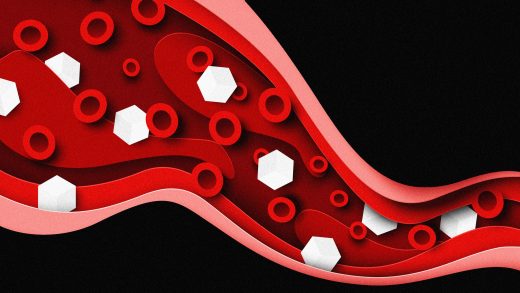How AI can power GLP-1’s next frontier in medicine
How AI can power GLP-1’s next frontier in medicine
Given growing access to data and advancements with AI, providers should be able to predict which patients will fare better on a specific weight loss drug.
Originally developed to treat diabetes, GLP-1 agonists—now also popularly known as obesity drugs—have been making headlines for their weight-loss effects. Now, the commercial success of these GLP-1s such as Ozempic, Wegovy, Mounjaro, and Zepbound has unlocked a flurry of new research into how this blockbuster drug class may support more treatments beyond just diabetes and weight loss.
However, while the pharma industry is aggressively pursuing adjunct use cases, they are only scratching the surface because it’s the precision medicine frontier that offers an opportunity to both open up many new commercial pathways and significantly advance personalized patient care.
Today, we are in a very early stage of discovery when it comes to secondary use cases for GLP-1s because clinical trials—the traditional approach to identifying adjunct use cases for drugs—were built for scientific rigor, not speed and cost-effectiveness. Still, if we learned anything from the COVID pandemic, it’s that speed absolutely does matter when it comes to pursuing scientific innovations that can save or vastly improve life for millions of people.
The question is, then, what will it take to accelerate precision medicine when it comes to GLP-1s—and how can we look to apply lessons learned from the pandemic in order to realize near-term, data-driven insights that will bring personalized treatments, medications, and care to patients in the near term?
Learning from oncology to unlock the power of GLP-1s
To understand just how “blackbox” GLP-1 drugs are today, one only needs to read or listen to the news. For example, early GLP-1 studies seem to appear daily, and they point to potential issues, such as unwanted side effects in some patients, like psychiatric issues, or opportunities—like GLP-1 agonists potentially being used to treat prostate cancer one day. The key word here? Potential.
While we have some data suggesting the unwanted side effects of GLP-1s in certain patient populations, we don’t have enough data and research just yet to be able to prescribe these medications to those who will benefit most if used for weight loss alone. And we are also rich with insights but hard up on data-driven evidence that identifies surefire ways GLP-1s can be used to effectively treat other chronic illnesses, like chronic kidney disease.
Given growing access to data and advancements with AI, shouldn’t providers be able to begin predicting which patients will fare better on a specific weight loss drug? And shouldn’t pharma companies producing, selling, and researching GLP-1s be able to more swiftly identify how these drugs can effectively be used for label expansion opportunities?
The short answer is yes, and both of these efforts are slowly happening as we speak. But they are not happening at the speed needed to drive optimal outcomes for patients today—or for pharma to confirm and be able to offer near-term, impactful use cases for these drugs beyond weight loss alone.
Instead of a “wait and see” mentality, what providers and pharma need to advance GLP-1s into the precision medicine era is to take a page out of oncology’s playbook—starting with advancing the collection and use of real-world, multimodal, and longitudinal data for patients who are prescribed GLP-1s.
Oncology is the therapeutic area where precision medicine has made the biggest impact to date. Today, oncologists can choose treatments based on the genetic profile of the tumor itself. The parallel here is choosing a GLP-1 drug for a patient based on a digital phenotype that can help predict which patients are most likely to have the best response and with the fewest side effects.
Similar to what we’ve seen in oncology, the ability to personalize therapy based on each person’s unique biology is incredibly powerful, so imagine what it could unlock for GLP-1s?
But there’s a catch.
The holes in unstructured health data
In order to bring precision medicine to GLP-1s, there’s a huge hole in our understanding of how these weight loss drugs are impacting people in the real world. We may have more access to real-world data (RWD) today than ever before, but a vast majority is still completely isolated and unreadable—locked away in various systems within provider organizations.
To date, RWD has mostly come from electronic health records (EHR), claims data, and/or disease-specific registries. However, while reasonably rich and increasingly more accessible, what many health innovators, scientists, and researchers have barely touched is what I believe is the highest value, the unstructured clinical data that sits outside the EHR—specifically, waveforms (such as data in the form of an electrocardiogram) and imaging data (such as an MRI or CT scans that are in a picture archiving and communications system, or PACS).
This rich, multimodal data, which makes up over 80% of healthcare data, holds the greatest potential to personalize GLP-1 care and/or accelerate new drug development life cycles. That said, this data isn’t always easy to access since it’s typically contained outside of the EHR.
We’ve already seen some researchers recognize waveform data opportunities, including using the data to improve sepsis treatment and pediatric care. For GLP-1s, waveforms and imaging data will also be mission-critical to developing the next frontier for the emerging drug class as they enable a more complete understanding of the impact of GLP-1s across multiple organs and physiological processes, while also understanding how and why different patient cohorts have different responses to current treatments.
But accessing unstructured data outside of the EHR data is only half of the challenge when it comes to ushering in an era of precision and personalization for GLP-1s.
AI as an enabler to precision medicine for GLP-1s
While so much AI hype has centered on generative AI and large language models (LLMs), pharma should shift some of its investment and RWD strategy to extracting meaning from unstructured data, specifically imaging and waveform data.
For example, while the impact of GLP-1s on obesity and type 2 diabetes for the general patient population is becoming clearer day by day, by applying advanced AI to these unstructured data assets (specifically imaging and waveforms, like ECGs) we can take these broad generalizations and turn them into more precise hypotheses to be tested, like: demonstrating GLP-1’s therapeutic effects beyond current uses, including secondary benefits derived from exploratory use or demonstrated with additional data modalities; and developing precision-medicine tools to identify patients with uncontrolled symptoms or to match patients to the right treatment plans.
The other vexing issue is the longstanding lack of trust in clinical AI solutions, which is needed in order to make sense of these large, unstructured data sets. As a result, we are increasingly seeing guardrails discussed (but not yet approved or acted upon) at the provider level and through recently established bodies, such as the Coalition for Health AI (CHAI). And while regulations and best-practice industry guidance—including assurance specific to AI being validated against unbiased, representative data—are critical pieces needed to formalize the trusted use of AI in healthcare, this will take a great deal of time. AI won’t be in a place to even be trusted until there is robust testing of algorithms against these large, unstructured, and unbiased RWD sets.
Today, we are seeing smaller pockets of AI algorithm testing proving fruitful with these unique unstructured data sets, like the work being done to drive personalized preventive best practices specific to sudden cardiac death. But to bring a similar approach to weight loss drugs, two things are needed today: stronger integration of both structured and unstructured health data, including data housed outside of the traditional EHR repository, and the creation of a more robust and scalable approach to vetting AI algorithms that have been trained on these rich, unbiased datasets.
Only then will patients, clinicians, and health plans have the intel needed to drive a more personalized approach to weight loss, and pharma leaders, in turn, can more quickly and cost-effectively understand the adjunct benefits of these highly sought-after drugs for other conditions.
ABOUT THE AUTHOR
(28)



